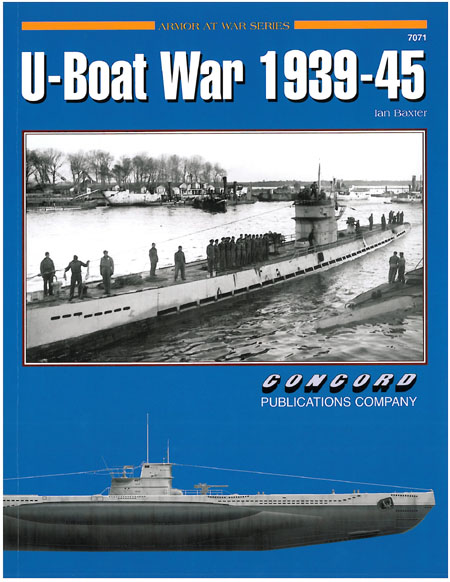U-BOAT WAR 1939-45
During World War II, one of the most publicized branches of the German armed forces was the U-Boat Command. At the beginning of the war, the submarine service was unprepared for the conflict to come, and as the war began, a rapid expansion took place, with U-boat construction and crew training assuming a rapid pace. The Germans never had enough U-boats, and as the war progressed, the Allies were able to develop countermeasures, such as long range aircraft, convoy escorts, and the decoding of German Enigma traffic, which slowed down and eventually overcame the effectiveness of the U-boats against Allied shipping. Although over 1,100 U-boats were built, over 800 were unsuccessful or never saw action, but nevertheless, only 30 U-boat commanders accounted for about 800 of the total of about 3,000 merchant and naval vessels sunk by U-boats during the course of the war. And tragically, of the 38,000 men that went to sea in U-boats, only 8000 survived the war.
This soft bound paperback 8-1/2” X 11” has 72 pages, 172 black and white photos, and 8 color plates.
The book has only one page of text, explaining in general the course and outline of the U-boat war. The real value of the book is the photos and color plates. The photos are all contemporary pictures of U-boats and their crews. They appear to be mostly pictures taken by the crew members themselves, showing the men, their equipment and uniforms, and the process of leaving and re-entering ports. There are also some good photos of the boats both in harbor and at sea. Quite a bit of coverage is given to the U-boat pens in France, and the overall effect is to give the reader a vivid description of what it must have been like for U-boat crewmen during the course of the war. No mention is made, however, of the role of the Luftwaffe in providing long range aircraft for the location of convoys and the direction of the “wolf packs” which attacked them.
This is a book more about the people than the machinery, and gives an intensely human dimension to what is usually portrayed as a technical subject. It will, however, be very useful to the historian trying to understand the events, and the modeller, trying to recreate these activities in miniature. For both groups, the book is worth getting. Highly recommended.
Thanks to John Noack of IPMS/USA and Concord Publishing for the review copy.



Comments
Add new comment
This site is protected by reCAPTCHA and the Google Privacy Policy and Terms of Service apply.
Similar Reviews